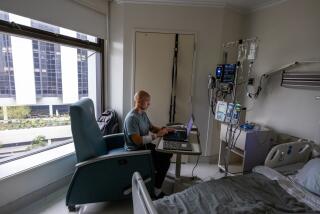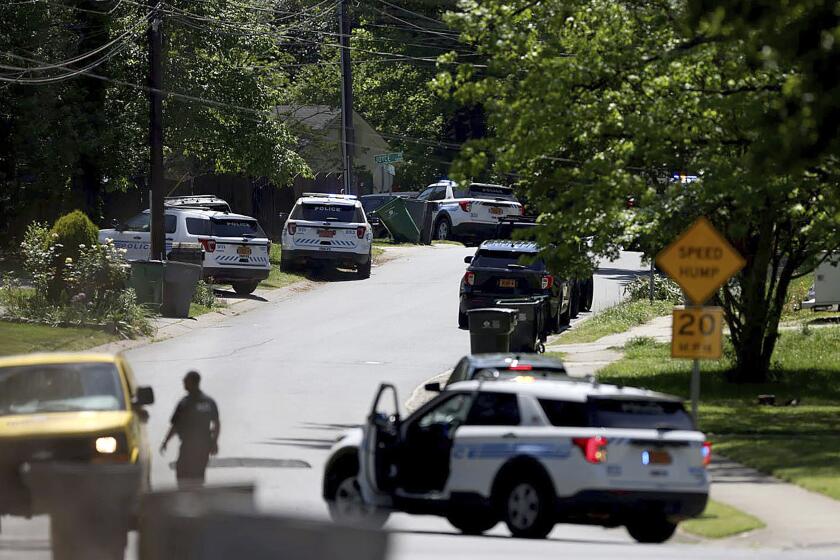As second twin awaits kidney donor, rural Washington family can only wait
When Emily Golladay was told her young daughter needed a kidney transplant, the first thing she thought was, “At least it’s not cancer.” The second was, “This is fixable.”
And she was right. Golladay was the first person doctors tested to see whether she could donate a kidney to Laynee Schneider, her ailing 8-year-old. It was a perfect match.
Seven years have passed, and now, Laynee’s twin sister, Kammie, is the one with the bad news. Kammie’s kidneys are failing too, irreparably damaged by the same ailment. But this time, all her mother can do is pray.
“I have to watch her go through the same thing Laynee went through, and I can’t help her,” Golladay said. “That’s my frustration. And there are a lot of those days. Then there are the days where you have to sit and go, ‘Well, I’m not in control. God’s in control. And you have to lay your children at his feet on a daily basis.’
“And I have to keep reminding myself of that.”
On Monday, 15-year-old Kammie was placed on the active transplant list — the national registry for organs from people who have died — and the wait for a life-saving donor kidney began. Children get priority because they are still developing, pediatric experts say, and a year on dialysis is a bigger burden for a 3-year-old than a 40-year-old.
But the wait could still be up to a year or more. The race is to get a donated kidney before Kammie has to go on dialysis. A living donor would be best. None has been found. Yet.
“To be honest, I’m really not even thinking about it,” Kammie said. “I’m taking it a lot better than my mom is.... She wanted me to get better. I knew that I would have to have a kidney transplant.”
Although Laynee was the first to undergo a transplant, Kammie was the first of the twins to get sick.
She was 18 months old when she had a string of bad urinary tract infections. After her temperature soared to 106 degrees, Golladay rushed her to the pediatrician.
Kammie was eventually diagnosed with reflux nephropathy, in which urine travels back up through the urethra and into the bladder instead of leaving the body, placing the kidneys at risk of infection, scarring and chronic disease. She was put on low-dose antibiotics. At age 4, she had surgery to move and extend her urethra.
“We thought it was all taken care of,” Golladay said — that Kammie “was good to go. No big deal.”
“And then we noticed that Laynee went from this very active child — very active — to just sleeping 18 to 20 hours a day. At 8 years old, she was going through two Pull-Ups a night. And I was like, this isn’t right.”
A nurse practitioner told the worried mom that Laynee was just being lazy and would eventually grow out of it. But during a regular bi-yearly trip to the allergist, the doctor realized the child was losing weight.
He told Golladay to take Laynee to Seattle Children’s Hospital, nearly 200 miles away from their small farming town in central Washington, where Laynee’s stepfather grew corn and grapes.
One afternoon in 2008, when the allergist was on a conference call with Golladay and a doctor and scheduler from the Seattle hospital to set up an appointment, the twins’ older sister, Shantana, ran to their mother in a panic.
“She’s like, ‘Mom, Laynee’s running a fever of 106, and she’s throwing up,’” Golladay recounted. “Of course, I’m still on the phone … and the doctor heard her.... They’re like, ‘Pack her up and get over here.’”
Twenty minutes later, the family of six was on the highway.
By the end of the month, Laynee had been diagnosed with kidney failure and had surgery to implant a feeding tube in her abdomen, along with a port to hook her up to the home dialysis machine that would keep her alive until a donor kidney could be found.
The family dubbed the machine Baxter. Her parents were taught to hook her up every night and take her off the machine every morning. For more than a year, Laynee lay in bed from 8 p.m. to 8 a.m. while Baxter filtered toxins from her blood.
When Golladay learned that Laynee needed a kidney transplant, she did not immediately think, “I’ve got to give her mine.”
“I was thinking, ‘I have three other kids at home; how am I going to give her a kidney and take care of everybody else?,’” the 41-year-old said this week, sitting in the cramped living room of their small farmhouse, surrounded by fields and grapevines. “It takes you out of commission.”
Still, on April 27, 2009, mother and daughter were wheeled into operating rooms at the University of Washington Medical Center in Seattle for the operation that would save Laynee’s life.
The family spent more than a year shuttling between Sunnyside and Seattle. They were sometimes together, often apart — in hospital rooms, bunking at the Ronald McDonald House or at the home of Golladay’s sister in nearby Snohomish.
Laynee’s younger sister, Elise, learned to walk in the halls of Seattle Children’s Hospital, helped along by the nursing staff. When the family was together at the Ronald McDonald House, Elise insisted on sleeping with her mother and stepfather, David Golladay. Not between them, David said — but across them.
“I think she wanted to touch us to make sure we were both there,” he said, adding that the hardest part of the whole ordeal was the disruption to the family’s quiet life in the rolling hills of the Yakima Valley.
“Your family’s being split,” David said. “One is sick. The rest are apart. And you’re over here. That’s the hard part, at least for me.”
That disruption has already begun again.
In November, Kammie’s grades began to slip and she came home from school exhausted every day, sure signs of advancing kidney disease. She was placed on the waiting list for a new kidney, but with “inactive” status, the first step toward an eventual transplant.
Shantana, who is now 20 and a freshman at Northwest Nazarene University in Nampa, Idaho, was in her dorm studying when she got the news about Kammie. The subject she was studying? Anatomy — the endocrine system, to be exact. She wants to be a nurse.
“I remember hanging up and going, ‘Here we go again,’” Shantana recalled. “I remember going to class the next day. All the professors before class ask for prayer requests. I raised my hand and said, ‘My sister just got put on UNOS,’” the United Network for Organ Sharing registry.
The professor knew one of Shantana’s sisters had already undergone a kidney transplant.
“Another one?” he asked.
And then he prayed.
“Be with Shantana’s sister. Keep her safe. Keep her kidneys functioning. And let there be a donor.”
Twitter: @marialaganga
More to Read
Start your day right
Sign up for Essential California for news, features and recommendations from the L.A. Times and beyond in your inbox six days a week.
You may occasionally receive promotional content from the Los Angeles Times.







